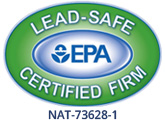What Causes Blocked Air Ducts?
 Homeowners are unlikely to notice a blocked air duct, unless something physically obstructs it from the outside. Other signs like varying temperatures between rooms and above average energy bills often point to a clogged or damaged HVAC system.
Homeowners are unlikely to notice a blocked air duct, unless something physically obstructs it from the outside. Other signs like varying temperatures between rooms and above average energy bills often point to a clogged or damaged HVAC system.
If cool air or heat cannot migrate properly through your HVAC system, you may crank it up to try and make the room more comfortable. Meanwhile, your HVAC system has to work harder to compensate. With all factors considered, here’s what you can do if a blocked air duct happens in your home.
Know How Your Ducts Work
Your HVAC system consists of a network of ducts. Air moves through the supply ducts to cool or warm rooms to the desired temperature. Within the network, return ducts collect the air, which gets filtered, dehumidified and heated or cooled. Return ducts are the ones passing near the vent grates.
Your home’s duct network may experience two basic types of obstructions. Exterior physical obstructions occur when furniture or rugs cover all or part of a vent, preventing air from fully flowing into the room. On the other hand, the obstruction may occur internally. An object may have fallen into and passed through a vent or a dust and debris-filled filter may prevent air from naturally going through.
Understanding Common Internal Duct Obstructions
More often than not, dust, debris and dirt get into the passages and block air flow. In certain cases, paper, cardboard, woodchips or other debris gets through the grate and builds up inside the ducts – especially around curves and bends. In more serious instances, pests or creatures from the outside may venture inside and get stuck or build nests.
If you believe this to be the case, take a flashlight and look inside the grate. If the obstruction is easily spotted, try to clear it out on your own or contact a pest control company to remove any nests and sanitize the material. If the obstruction is in a less-accessible location, it will require the assistance of an HVAC professional.
Check the Air Filters
Get into the habit of changing air filters at least once a season for better air flow and improved indoor air quality. Ignoring this task causes dirt and debris to build up in the filter and eventually impedes air circulation, decreasing air quality.
Don’t Discount Damaged Ducts
The duct itself may be to blame. Not a physical obstruction but rather, loose seams, openings or disconnected portions may divert air away from the passageway, outside or into other parts of your home. Flex ducts are more prone to these issues. Based on data from Energy Star, holes, leaks and damage may reduce a home’s air circulation by 20 to 30 percent.
Closed Dampers
Aside from the return and supply ducts, your home’s HVAC system typically uses dampers to help control the air flow. If a damper is closed, air will not flow into a particular room. To regulate air pressure, dampers should remain open unless you temporarily close one to divert or conserve heat.
However, dampers may become loose, get damaged or stuck. In turn, some of the air is blocked from passing through the grate and warming the room. If you’re concerned about the dampers, manually open them via the butterfly valves, then determine if the air is flowing. If all dampers throughout your home are open but you still don’t feel the air coming through, the duct may be blocked or damaged.
Don’t watch your heating bill soar or let certain rooms in your home be an uncomfortable temperature. Instead, have M.J. Fahy & Sons inspect your HVAC system and repair any obstructions or damaged duct work before winter begins. To make an appointment, give us a call today.




